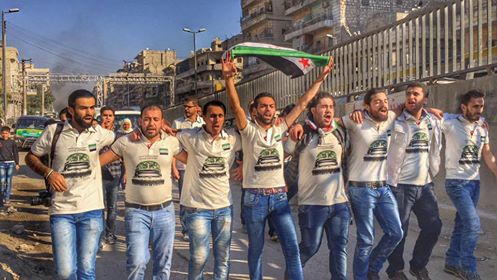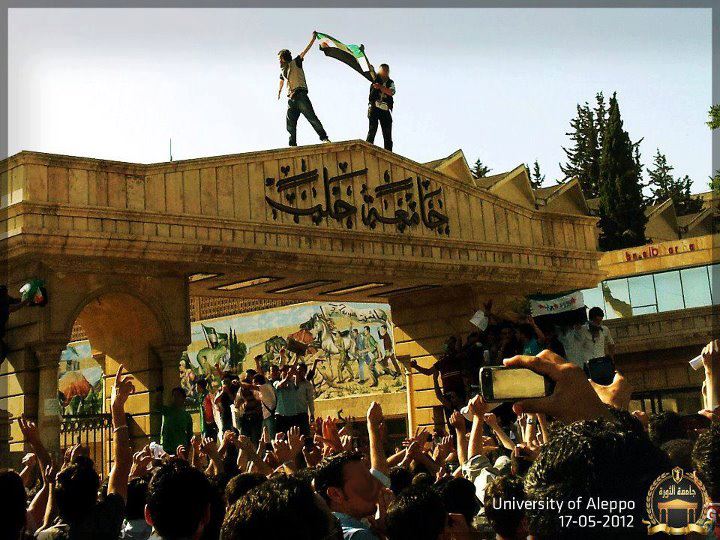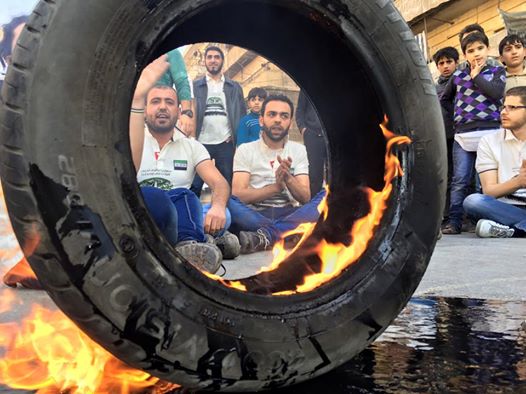Despite the prevalence of violence in Syria, civil disobedience and protest activities have been on the rise in Aleppo. The city’s activists, braving the daily clashes in the town, have returned to organizing civil disobedience.
On Monday, November 9, 2015, activists burned tires and cut off the main road in the Ferdous neighborhood against the abduction of their colleague,Mohamad Maher Karman, the head of The Syrian Promise, who was kidnapped by Al-Nusra Front according to Aleppo Rebels Council.


These recent demonstrations are a reminder of the first protests in Damascus, in February 2011 in front of the Libyan Embassy. The protesters then chanted, “traitor is he who kills his own people.” The cheers that rang out from these most recent demonstrations were “traitor...traitor….traitor… he who kidnaps activists is a traitor.” Media activist Wisam Khiyat wrote about the demonstrations on his facebook, noting that the participants in these actions have cut across Syria’s social strata from doctors to “lowly activists”.
One thing that is different about these most recent demonstrations is the adoption of a uniform dress-code. In the pictures, all the activists are wearing the same shirts and outfits featuring the independence flag, pictures of protests and an eagle and a helmet representing the Free Syrian Army. Mohammad Zaidan, an organizer, told SyriaUntold that these images are not a logo for a specific movement nor do they represent a particular political party.

Why did the protesters choose an act of civil disobedience? Zaidan told SyriaUntold that the city’s continued exposure to aerial bombardment by Russia and the regime, as well as the infiltration of activist circles, has made civil disobedience more effective. “We are continuing until our demands are met, which include the reinstatement of FSA checkpoints and the release of kidnapped activists.”
Activists in Jibb Al Quebeh also cut off a road there during the second day of disobedience. These activities signal the return to the age of the the non-violent movement, even though this time it was against the FSA. Zaidan says that this movement, “is of us, and we are of it.”



